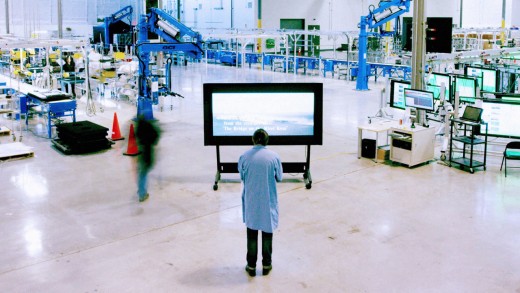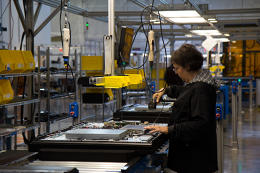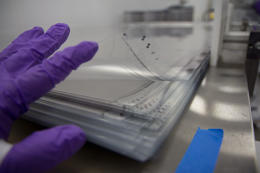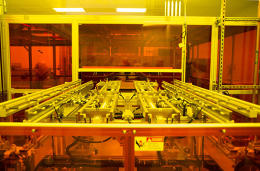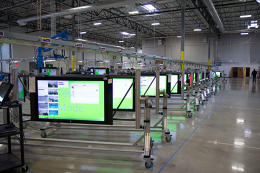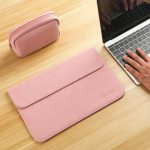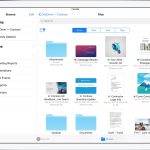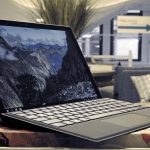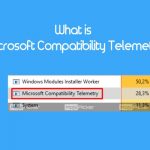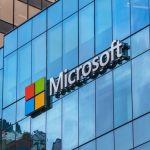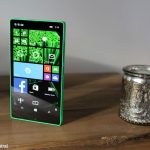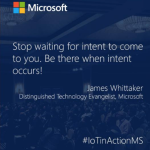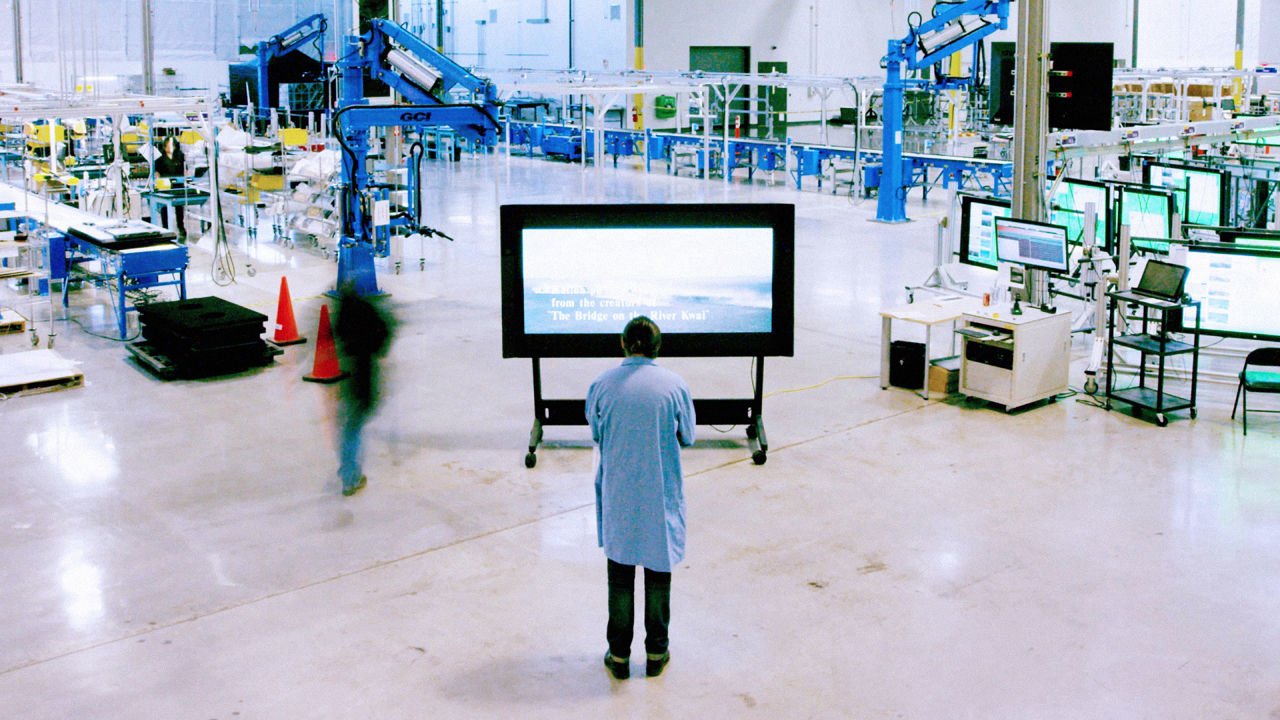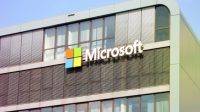The Untold Story of Microsoft’s floor Hub
a man with a dream. a company in flux. A secret manufacturing unit outside Portland. And a hyper-ambitious gambit to reimagine how meetings happen.
June 10, 2015
Jeff Han’s fingers are dancing across an expansive, wall-established contact reveal. Planet Earth spins in entrance of him in laptop-generated type; he grabs it with each palms and begins to zoom in. He keeps going—Western Hemisphere, North the usa, united states, Pacific Northwest—until we’re ultimately gazing a prosaic industrial house alongside a freeway.
“here’s our building, right right here,” he publicizes.
The conference room the place this demo is going on is called3023771″> invoice Gates, so it should not come as a whole shock that we’re on Microsoft premises. but this is not company headquarters in Redmond, Washington. Han and i are 200 miles away, across the Oregon border within the Portland suburb of Wilsonville, within a 4-acre structure flanked by means of a producer of industrial shredders and a storage facility for boats and RVs.
invoice Gates, so it should not come as a whole shock that we’re on Microsoft premises. but this is not company headquarters in Redmond, Washington. Han and i are 200 miles away, across the Oregon border within the Portland suburb of Wilsonville, within a 4-acre structure flanked by means of a producer of industrial shredders and a storage facility for boats and RVs.
Microsoft hasn’t performed up the fact that it has a major operation in Wilsonville. in fact, it can be been downright stealthy about it. (The roadside signage directing guests to the primary entrance doesn’t even point out a company name.) but when you consider that March 2014, the building is the place the corporate has been engineering the tool Han has been exhibiting me, the surface Hub.
the company unveiled the tool all over its home windows 10 launch extravaganza in Redmond ultimate January. It showed how the eighty four-inch all-in-one computer can be utilized for tasks such as brainstorming, videoconferencing, and PowerPoint displays, all carried out by the use of contact and pen input fairly than mouse and keyboard.
Microsoft held back one of the crucial intriguing information about this home windows 10 computer until now: It no longer only designed the surface Hub but is about to begin manufacturing the article itself, in 70,000 sq. ft of manufacturing facility space within the Wilsonville building, steps faraway from where the hardware was once engineered. “We don’t in fact manufacture the liquid crystal display panel,” Han explains. “but that’s just about the only thing we don’t make right here.” Two fashions, a $19,999 unit with an 84-inch show and a $6999 model with a 55-inch show, will roll off the meeting line.
Microsoft has achieved this sort of crafty job of retaining its Wilsonville plans on the QT that a September 2014 Oregonian article on the facility merely assumed that it was all but a given that the corporate would go offshore when it got here time to construct the rest. “[M]ass manufacturing would nearly indubitably happen in a country with decrease labor costs,” the story helpfully defined. “it can be that method with nearly all excessive-volume electronics manufacturing.”
For the 39-yr-old Han, the upcoming liberate of the skin Hub is the fullest expression but of a mission he’s been pursuing for more than a decade. the arena first took observe of it in 2006, when he was once a pc-science researcher giving a TED speak in Monterey, California, about an intuitive new computing interface called multi-contact. He was an exuberant, charismatic presenter—and still is, as I discovered when he showed off the skin Hub to me in Wilsonville.
within the pre-iPhone technology of 2006, what he confirmed used to be mind-bending; the video model of his presentation changed into some of the first TED talks to head viral, and Han’s sheer enthusiasm made multi-contact really feel adore it would possibly certainly be the next large factor. He then parlayed his fame into a startup, Perceptive Pixel (PPI), which sold pricey monitors to everybody from the division of defense to Disney. Microsoft acquired the company in 2012.
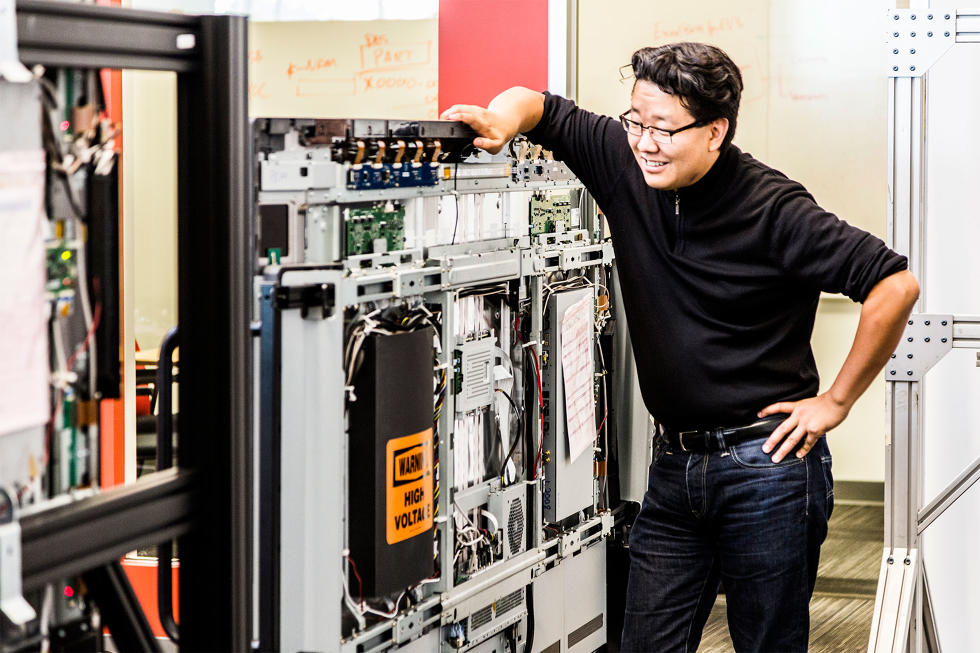
nowadays, Han is basic manager of floor Hub. without his research, imaginative and prescient, and persistence, the device might no longer exist. And but on the comparable time, it’s also a profoundly Microsoftian product. PPI’s products have been shows you plugged right into a pc; the surface Hub is a computer, operating big-monitor variations of windows 10 and place of work. It doubles as a videoconferencing machine geared up with two excessive-resolution cameras and Microsoft’s Skype for industry service. There are even indicators of Xbox affect, such because the noise-canceling 4-element microphone, which originated as part of the game console’s Kinect sensor.
unlike the other hardware instrument Microsoft unveiled on the January windows 10 adventure—the combined-fact HoloLens headset—the surface Hub would not have a whiff of science fiction about it. it can be about polish and technical sophistication greater than raw futurism, and in a way, it seems like Microsoft tackling a bit of unfinished trade.
“I’ve been working on product development around productiveness endlessly,” says Mike Angiulo, who, as Microsoft’s company VP for hardware, is Han’s boss. (“perpetually,” in this case, way when you consider that 1993.) “If I think about what’s changed considering that I’ve been there in terms of people doing work, your capacity to create and keep up a correspondence has gone up exponentially, with PCs and mobility and telephones. however the conference rooms are precisely the identical as they have been when I started. They’re like time tablets. There’s a projector, there’s a whiteboard, there’s a conference phone.”
With the outside Hub’s collaborative instruments, Microsoft is making a hyper-formidable try and yank these time capsules into the present day. which isn’t anything else like a make sure that it is going to achieve success. In 2002, for example, the company launched pill PCs and said it expected them to displace typical laptops inside a half of decade; they did not. And its first foray into multi-contact computing—2007’s original floor, which constructed a computer right into a desk for use in retail environments—failed to go anyplace.
still, irrespective of how the market responds to the surface Hub, the fact that Microsoft is in the back of it raises the stakes some distance past anything Han has attempted previously. “This isn’t a trivial little experiment,” he says. “We’re dedicated.” He pauses. “We don’t do issues small at Microsoft. We do issues large.”
From TED to bill, Steve, and Satya
for so long as he can take into account that, Han, a research scientist working out of recent York university’s Courant Institute, has been fascinated by know-how. He even doodles in right angles, rectangles, and squares—hieroglyphs that appear the same as circuitry, a schematic of his unconscious. The son of center-type Korean immigrants who emigrated to the united states in the Seventies to take over a Jewish deli in Queens, Han began taking aside the domestic television, VCR, “anything else that was once blinking,” on the age of 5 (he nonetheless has a foul scar courtesy of a sizzling soldering iron his little sister knocked onto his foot).
—From “can’t contact This,” a profile of Jeff Han with the aid of Adam Penenberg within the February 2007 problem of fast firm
Han first noodled round with multi-contact interfaces—an idea courting back to the 1970s—in 2002, as a researcher at the big apple college. Then he put the challenge aside in want of other experiments. (though his name is almost synonymous with multi-touch, he’s also explored the whole thing from self reliant navigation to eye tracking to motion seize.)
In 2005, he grew to become his consideration again to multi-contact, and stuck with it. by using February 2006, he used to be prepared to point out his work in development on the TED convention, the usage of a 36-inch reveal arrange like a drafting table, with cameras that tracked his finger movements. viewed nowadays, his demo continues to be enticing. but for a 2015 viewer, essentially the most putting factor about it is the sound of attendees gasping and applauding at now-familiar gestures comparable to Han pinching a photograph to resize it.
Han began his presentation by means of explaining that the interface he was about to show used to be prepared to return out of the lab. He wasn’t exaggerating. Perceptive Pixel, he told me, “used to be founded shortly after the response I bought from TED.” The startup’s intention was to show the expertise into useful commercial products.
however, the next significant second within the popularization of multi-contact took place on January 9, 2007, when Steve Jobs introduced the first iPhone at Macworld Expo in San Francisco. “we now have invented a new expertise known as multi-contact,” he boasted, in one of the most more truth-distorting issues ever stated all over an Apple keynote. Han, by contrast, had been cautious to share credit in his TED discuss: “i am no longer the one one doing it, there are a lot of people doing it.”
among the many different organizations that had been working on multi-touch was Microsoft. four months after the iPhone divulge, it introduced floor, a windows Vista pc built into a table with a 30-inch display. The interface bore determined similarities to Han’s efforts. but as an alternative of touting the desk as a device for office productivity, Microsoft stated it was once going to roll it out in public places equivalent to motels, casinos, and make contact with shops.
A press free up quoted Microsoft CEO Steve Ballmer: “We see this as a multibillion greenback class, and we envision a time when surface computing applied sciences might be pervasive, from tabletops and counters to the hallway reflect. floor is step one in realizing that vision.” but the billions by no means rolled in. Microsoft gave the table a vote of no self belief in 2012 by means of stripping it of its title, redubbing it PixelSense and turning the outside moniker over to a line of home windows 8 tablets. Samsung continues to promote a PixelSense-primarily based desk computer, however in case you’ve never considered one in the wild, you will have obtained lots of firm.
while the outside desk was failing to capture on, the iPhone used to be hanging multi-contact into the fingers of individuals around the globe, reworking the cellphone business forever. as of late, Han says that neither product led him to question whether or not he used to be on course. “i needed to focal point on upright productivity,” he explains. “Ever when you consider that TED, that’s what it was once about for me.”
Perceptive Pixel’s earliest monitors found an unexpected killer app all through the 2008 presidential campaign. information broadcasters—most famously John King of CNN—used them to swoop round maps and tally up votes via tool handcrafted for the aim by PPI.
the company offered these monitors for six figures, but higher nonetheless, they served as amazing free advertising. “John King knows each single a type of counties,” he says. “He’s now not studying off the monitor. He’s using this as a storytelling software. at the moment, each time a customer saw that, they had been like, ‘that is precisely what I want to do.’ this is what a teacher does. that is what a commander does in a mission briefing. this is what a medical professional does prior to they in truth go into surgical procedure.”
Han’s big-ticket excessive-finish displays attracted consideration, won awards, and generated revenue. but on some stage, he remained unhappy. “It was once just right to put meals on the table, but it was once now not going to be a huge, big business,” he says. “We acquired quite a few criticism as a startup: ‘great stuff, but when are you going to make it more cost effective for the plenty?’ That’s exactly why we began talking with Microsoft.”
these talks incorporated each Steve Ballmer and Microsoft’s cofounder after which-chairman, bill Gates. “We started talking with them and realized they if truth be told have the identical imaginative and prescient,” Han says. “once I met bill Gates, he literally mentioned to me, ‘I want to see these things rain from the skies.'”
As for Ballmer, “he put one in his place of job right away. He was the first guy in the company to do it. He had a large corner workplace. He took down the one whiteboard he had and put up the PPI, and stated, ‘this is how we’re doing issues.'”
When Perceptive Pixel turned into a part of Microsoft in July 2012, it joined an organization in kind of continuous flux. Ballmer used to be energetically seeking to reposition the world’s most renowned device developer through delving into the hardware trade. just a few weeks sooner than saying the PPI deal, the company had unveiled its floor tablets, the primary PCs ever to be sold below the Microsoft title.
at first, PPI used to be a part of Microsoft’s place of business division, inserting it as close as conceivable to the nerve heart of the corporate’s productivity efforts. A yr later, Ballmer instigated a sweeping reorganization that clustered Han’s workforce, more conventionally, alongside different hardware merchandise reminiscent of Xbox and surface pills (and, eventually, the former Nokia cellphone business, which Microsoft obtained in 2014).
handiest six weeks after initiating the reorg, Ballmer introduced he would step down as CEO once his successor had been found. the search dragged into February 2014, when longtime Microsoft government Satya Nadella bought the gig.
Nadella moved abruptly to rejigger how the company articulated its take on its own future, losing Ballmer’s “devices and services and products” mantra in favor of emphasizing mobility, the cloud, and productiveness. regardless of being the least portable hardware Microsoft has ever provided—the 84-inch adaptation weighs 280 pounds—the outside Hub mission’s center of attention on net-connected collaboration had a spot within the new CEO’s imaginative and prescient, particularly as he clarified that mobility was about more than phones and drugs. As he started out placing it: “We want to build experiences which are about the mobility of the expertise—not the mobility of the device.”
nowadays, Han says, “the administration give a boost to for this is even bigger than it used to be ever sooner than. that is not a ding on Ballmer. every time you have got a regime trade, you wonder. however this completely matches into Satya’s vision of cloud-related mobile workflows.”
the personal touches that contributed to creating Han’s 2006 TED demo so engaging have helped him find his approach within the Microsoft labyrinth. “Jeff’s an extraordinarily talented, vigorous man,” says hardware VP Angiulo. “And one of the vital few people who have made the transition from being a founder—where he was once operating the Jeff show—to now being a very powerful a part of a cross-company initiative. Skype is the one writing the Skype client. OneNote is writing the whiteboard. home windows has a complete group of individuals growing team windows now, that’s designed for sharing.”
Han, Angiulo says, “shows up with intelligence—deep intelligence, he really knows what he’s talking about. And the passion for the product, and the imaginative and prescient. He will get people to need to work with him.”
Microsoft will not disclose what number of staffers it has engaged on the outside Hub, however does enable that the number is in the a whole lot. They include Perceptive Pixel crew contributors reminiscent of David Slobodin, who supervises hardware, and Microsoft veterans equivalent to Hayete Gallot, who heads up business technique and advertising. Stevie Bathiche, director of research for Microsoft’s utilized Sciences staff, can also be involved; even Alex Kipman, very best known for spearheading the Kinect and HoloLens, is contributing to the home windows 10 side of things.
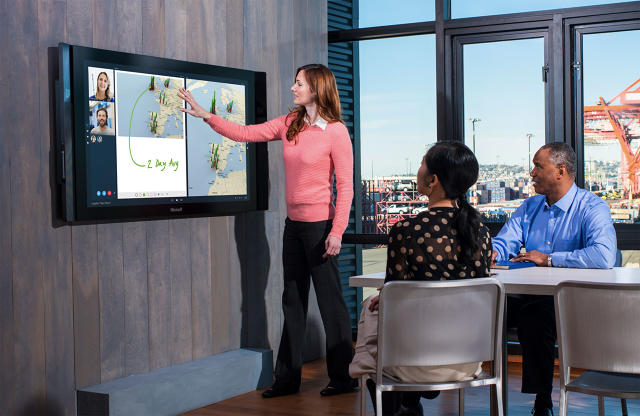
state-of-the-art reveal
now not people are bought on Han’s idea. Ben Shneiderman, a computer science professor at the college of Maryland and a founding director of the Human-pc interaction Lab, calls Han a “nice showman” who has “opened the door to thrilling possibilities.” however he does not suppose Han’s know-how would be appropriate for a large-scale client product, nor as helpful as a mouse on a big show. in case you are standing in front of the reveal, Shneiderman wonders, how would folks behind you be able to see what you are doing?
—From fast company‘s 2007 profile of Jeff Han
The tool that Han, former Perceptive Pixel staffers, and new Microsoft colleagues ended up designing is not exactly in a category of 1. InFocus’s Mondopad and Clary Icon’s OneScreen, for instance, mix massive contact monitors, videoconferencing, and windows into conference-room collaboration tools similar, in concept, to the surface Hub.
“I are aware of it sounds smug, but we don’t have opponents,” says Han when I ask about such machines. “positive, we’ve considered large contact monitors prior to, but they’re in a distinct league, to be trustworthy.”
conceited, maybe, but in addition a defensible stance. there may be quite a bit about the surface Hub that is new, starting with its touch-screen know-how. Like an iPad or surface pill, it makes use of an optically bonded capacitive contact reveal that offers it the same kind of buttery responsiveness and ink-on-paper readability that smaller-monitor units achieve. The screen’s refresh rate of 120Hz—twice that of smaller units—adds to the overall smoothness of the visible expertise.
the outside Hub’s capacitive screen additionally works with a pressure-delicate pen for notetaking, sketching, and different functions. though it is now not the only large display to provide a pen, it uses Perceptive Pixel technology, which allows a single capacitive touch-sensor machine to deal with both fingers and pens. Han says that PPI was once one of handiest two firms to have labored this out; in may just, Microsoft announced that it had obtained the other one, Israel-based totally N-Trig, whose know-how is utilized in floor capsules.
so much in regards to the floor Hub expertise is familiar that it can be tempting to consider it as an overgrown floor pill—a perception that the “surface” in its name would not do anything else to discourage. however the ways during which it differs from its dinkier counterparts are at the least as necessary as the similarities. For one thing, it’s designed to be used via a couple of people without delay—which, especially with the sprawling eighty four-inch adaptation, makes sense.
“Multi-touch was once about breaking the tyranny of the one, to me, the one cursor. but to carry multi-contact to its fullest doable, we’re going multi-person,” Han says. “various plumbing wants to change with a purpose to truly accommodate what it method for a couple of individuals to be working collectively. And there are some onerous problems in there.” for example, the surface Hub should be capable to to register lower than 10 fingers at a time, but 20 or more—and to determine if two persons are working in different apps on the similar time.
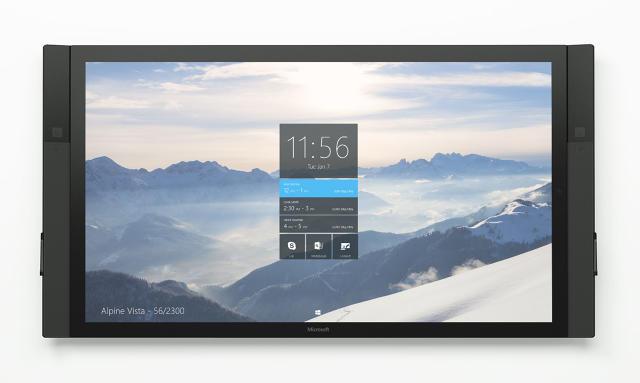
the skin Hub’s approach to videoconferencing is also new. as a substitute of plunking a single digital camera above the reveal like a pill would do, it’s acquired two side-established 1080p ones which are angled to capture the complete room and are “positioned at eye stage, not God degree,” Han says. The device’s special version of Skype for industry intelligently cuts between the 2 cameras to provide what Microsoft hopes is an most appropriate view of what is going on on at any given second.
speaking of device, it isn’t a twist of fate that the outside Hub will attain its first paying shoppers just a few weeks after windows 10 is available in ultimate kind. The tool and its working device have been built with each other in thoughts, and although the hardware can run the identical windows apps on the way to work on a pc, tablet, or telephone, it adjusts the interface to make sense on an enormous display. the start menu, for instance, sits in the course of the reveal, fairly than shooting up in the lower left-hand corner, and a few controls get duplicated alongside the left- and right-hand edges.
The Mondopad and OneScreen, against this, both ship with home windows 7—an running system that, though still loved by way of possibility-averse huge firms, was by no means designed with great displays or severe touch enter in mind.
so much of the surface Hub’s hardware and software is designed round the truth that’s supposed to be used through more than one individuals in a collaborative setting that Han bristles on the conception that it can be in simple terms a truly nice computer, or perhaps a laptop at all. “individuals have tried PCs in conference rooms sooner than,” he says. “They suck.”
the surface Hub objectives to do away with typical convention-room computer hassles. the usage of Microsoft alternate calendaring features, it mechanically credentials assembly attendees so that they do not have to log in to get get admission to to their recordsdata and the network. A motion sensor permits it to sit down unobtrusively until anyone procedures, whereupon the screen lights up. dispose of the pen from its holder, and the software automatically goes into whiteboard mode. And when your meeting ends, it wipes away all proof of the actions you conducted, so it can be prepared for the next consumer.
Microsoft has also put plenty of concept into how the instrument works with the PCs, capsules, and telephones that folks deliver into meetings. using the Wi-Fi Alliance’s Miracast wireless know-how, attendees can fling their devices’ shows onto the enormous monitor. unlike backyard-variety Miracast, the surface Hub’s version is bidirectional: if you happen to use its pen to scribble notes on a PowerPoint slide, your annotations trip again to the model on a windows 10 computer.
the surface Hub will do a lot out of the box, and will run same old windows 10 apps. however it’s lovely clear that it is going to turn out to be rather more helpful if third-birthday party developers begin to construct instrument with it in thoughts. And a few of that tool will need to cater to explicit industries.
“We digitally model the whole lot, however our interface is a mouse and keyboard, and that’s not necessarily probably the most intuitive way,” says John Cerone, director of digital design and construction at ny-based store Architects, whose initiatives embrace Uber’s new headquarters. keep has used Perceptive Pixel displays and has simply gotten in a preproduction floor Hub. With the appropriate applications, it sees the possibility of Microsoft’s new software to be transformative. “every time now we have the opportunity to touch or draw or pull or push a 3D floor, we need to do this,” Cerone says.
meeting Required
Jeff Han is helping me buckle my boots. They happen to be a part of the top-to-toe clean-room “bunny” suit i’m donning so one can talk over with the manufacturing unit ground where Microsoft assembles the outside Hub’s contact reveal. properly appropriate up, we must go through a tiny room where jets of air blast away any ultimate detritus from the skin world.
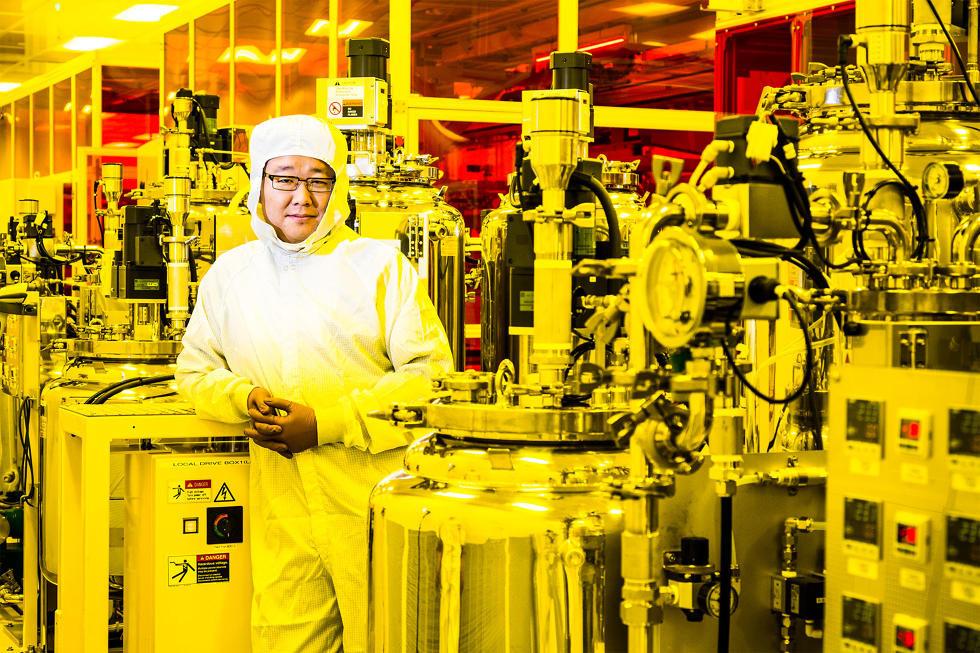
Cleanliness counts in manufacturing of all sorts, however the dimension of the outside Hub’s display u.s.a.the ante. “It’s exponentially tougher the bigger it goes,” Han explains to me. “It’s like defects in semiconductors. It’s actually via floor space. If i have one flaw—one little speck of mud or one little bubble—I throw away the complete factor.”
almost the whole thing that is difficult about making a floor Hub involves the method of fusing contact sensors and glass into enormous touch displays. though the capacitive technology is similar to that utilized in smaller units, the enormity of the 55-inch and eighty four-inch displays necessitated a new solution to manufacturing, and reduced the attraction of outsourcing the job to a third party on any other continent.
“We appeared at the economics of East Asia and electronics manufacturing,” says Angiulo. “while you go in the course of the math, it doesn’t pencil out. It favors things that are small and simple to ship, where the improvement approaches and instruments are a commodity. The machines that it takes to do this lamination? those simplest exist in Wilsonville. There’s one set of them, and we designed them.”
surface Hubs are anything else however small and easy to ship, a point that is glaring within the first situation, but much more so as soon as you might have viewed them being built. The sensors—the layers that notice finger presses and pen input—are saved as monumental Saran Wrap-like rolls. They get adhered in two elements to the glass that protects the liquid crystal display. the method of sandwiching the large layers together entails huge robotic hands capable of hoisting displays though the air, conveyors of more than a few designs, ovenlike chambers, and other custom machinery, all of which should do its job gingerly to keep away from damaging the element it’s developing Click to expand”>
“You get the feel of scale of these items?” Han asks me as we peer at an eighty four-inch piece of glass having its contact sensor applied. “I have a look at this almost as a patient on a desk.” At more than a few other instances on the tour, he compares the contact screens below meeting to vehicles, flypaper, pizza, and buttered pieces of toast. Like a proud father, he beams constantly, pausing to fawn over objects as mundane as the packing materials with a purpose to offer protection to floor Hubs when they’re shipped out of the factory.
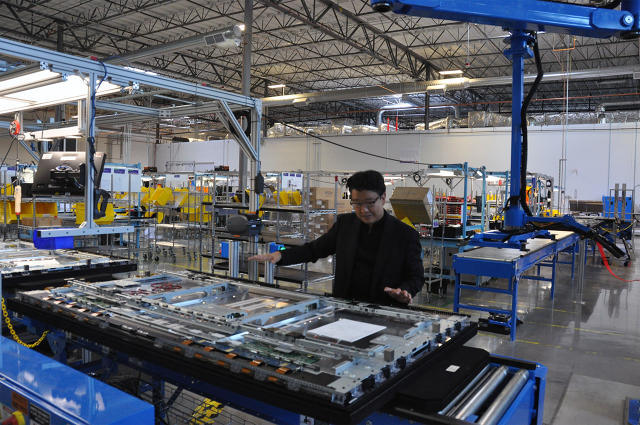
looking at floor Hubs being put together is an rapidly multi-sensory experience. it’s not just the thrum of the robotic tools. Even ahead of you notice the financial institution of sparkling steel vessels full of bonding supplies, you see the air is pungent with an epoxy-esque smell. In every other area, indicators warn you not to seem to be right away into the ultraviolet mild that cures the displays until the sticky adhesive is not sticky.
unique although this world seems, it is in the same constructing as the cubicles and conference rooms where the skin Hub’s hardware group toils. (instrument construction happens in Redmond, in nearer proximity to the folks accountable for home windows and different Microsoft tool.) Perceptive Pixel has had a presence within the Portland area because 2009, drawing on the region’s rich provide of show engineering talent, a legacy relationship back to the founding of lab equipment maker Tektronix in the 1940s.
“I don’t have to send my other folks over to China, in order that they’re happier,” Han says. “It’s sooner. There’s no language, time, or tradition barrier to handle. To have my engineers go down the hallway to speak to the guys within the manufacturing line and tune the recipe? That’s simply unbelievable.”
What subsequent?
at the time I visited Microsoft’s Wilsonville factory, it used to be still constructing surface Hubs in small quantities and gearing up for the mass-production effort necessary to get gadgets to shoppers via September. once I ask Han what the longer term holds for the product line, once it turns into a transport product, he refers obliquely to subsequent-generation fashions the company is currently engaged on, but offers no details.
In Microsoft’s San Francisco administrative center, his boss, Mike Angiulo, is extra express about where the road could go over time. He gestures on the eighty four-inch screen, after which at a wall that’s principally whiteboard (with an indication tacked up reminding people to erase it when they may be done). “by the time that’s mundane, this entire wall goes to be a screen,” he says. “And the whole thing you touch on the whiteboard is going to be responsive and digitally synced to the telephone. we’ve a vision for staff productivity that extends beyond what you can do with this type of a display these days.”
“I didn’t actually just announce those merchandise,” he provides, simply in case it wasn’t abundantly clear. “but you can imagine that if larger is healthier, the longer term is about having all of the areas you’re employed with whilst you’re round people to be useful to you.”
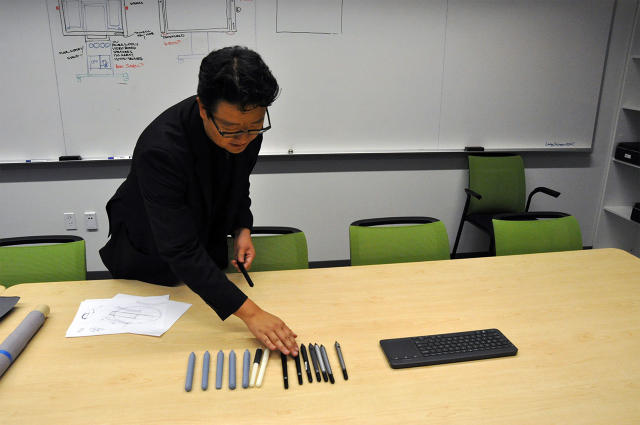
Will Microsoft maintain plugging away at making that dream into fact, particularly if the outside Hub is not an instantaneous breakout hit? “If anything else, they’ve already exhibited a good bit of patience,” says Forrester analyst J.P. Gownder, referencing the 2012 Perceptive Pixel acquisition and effort the corporate has put into making home windows 10 work neatly on a large show. “this is a excellent core-competency kind of place for them. i think this is going to be for the lengthy haul, especially as they get shoppers.”
way more patience shall be required. The Wilsonville quarters is festooned with floor Hubs in use—even hung in a wreck space near a pool desk. however when I stroll around with Han and see that the engineering workforce nonetheless writes on whiteboards and pins issues up on bulletin boards, the day when such old-college instruments are as archaic as a typewriter does no longer really feel drawing close. despite the fact that somebody has playfully scrawled, “this is out of date expertise” on probably the most whiteboards.
In Adam Penenberg’s 2007 quick firm profile, Han referred to trying to flit from technological problem to technological problem, like an entrepreneurial honeybee. Now he seems recreation to continue on with this quest. “This is among the ultimate frontiers of computing,” he tells me. “We’ve bought the personal factor nailed lovely well, you recognize? the following undiscovered u . s . is how we do issues with a couple of users, collectively.” just as when he gave his TED talk in 2006, his enthusiasm for his work is highly effective, infectious stuff. And with Microsoft’s lend a hand, we’re about to learn how much further he can take it.
[photo & Video: courtesy of Microsoft]
(299)

